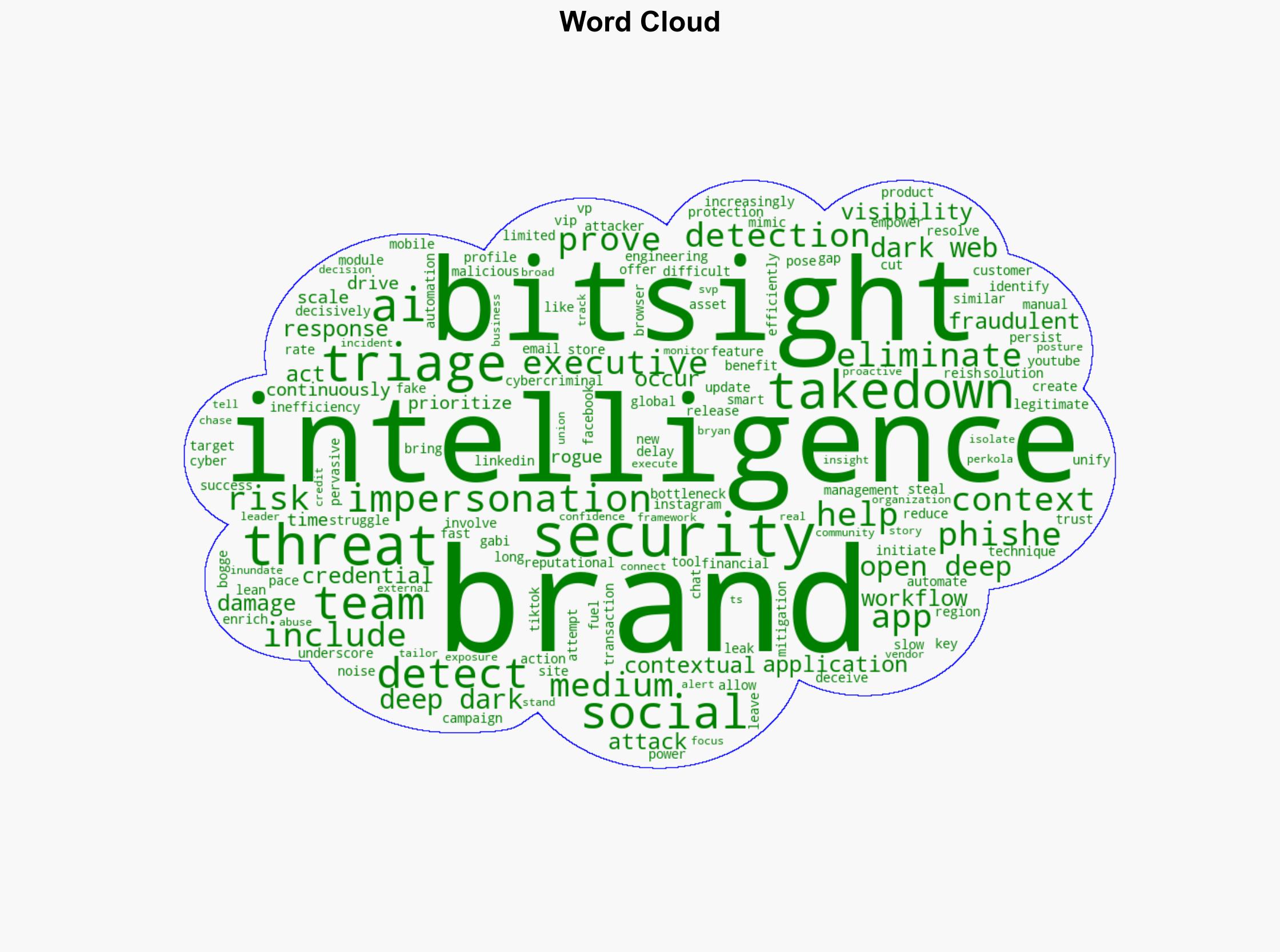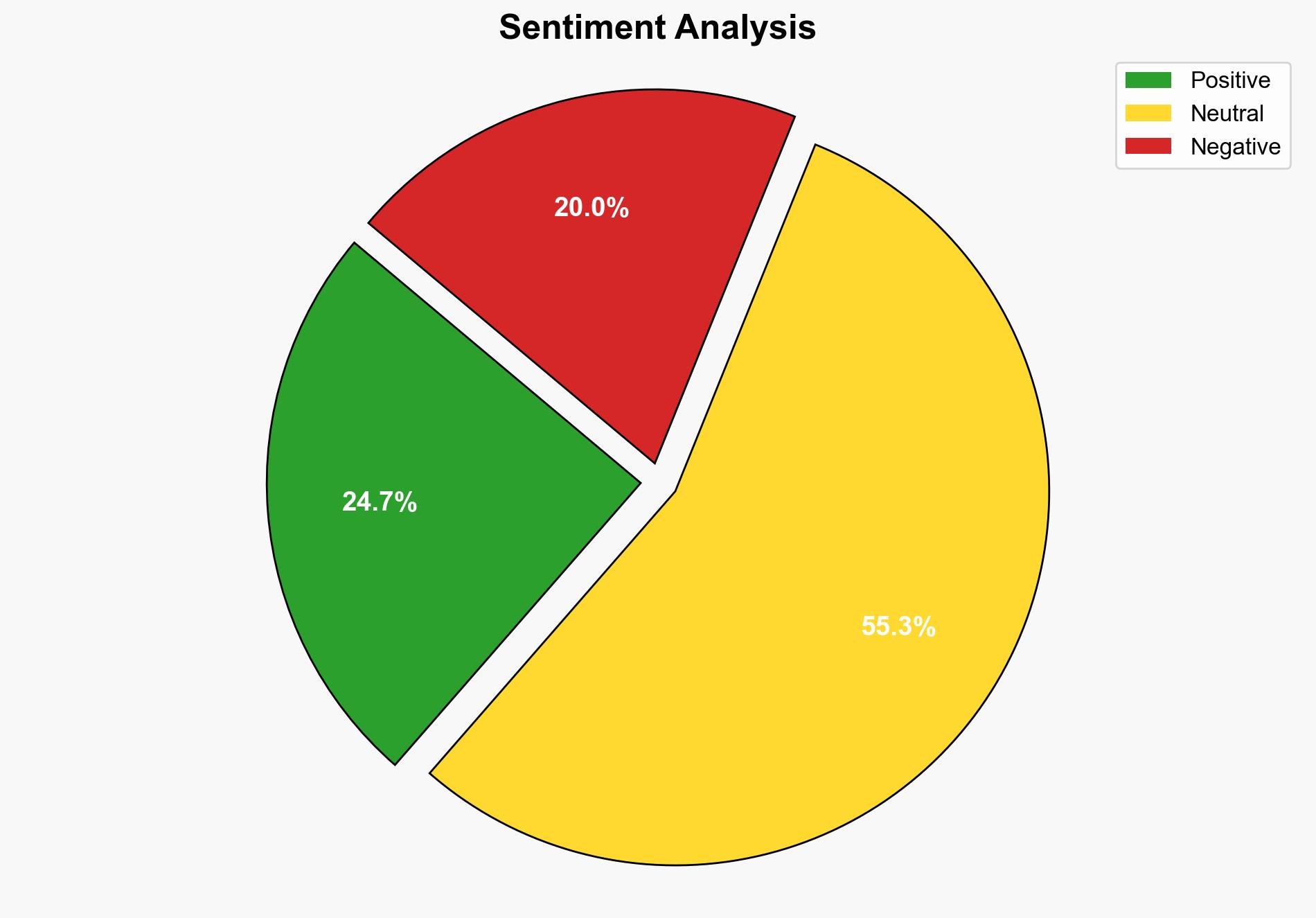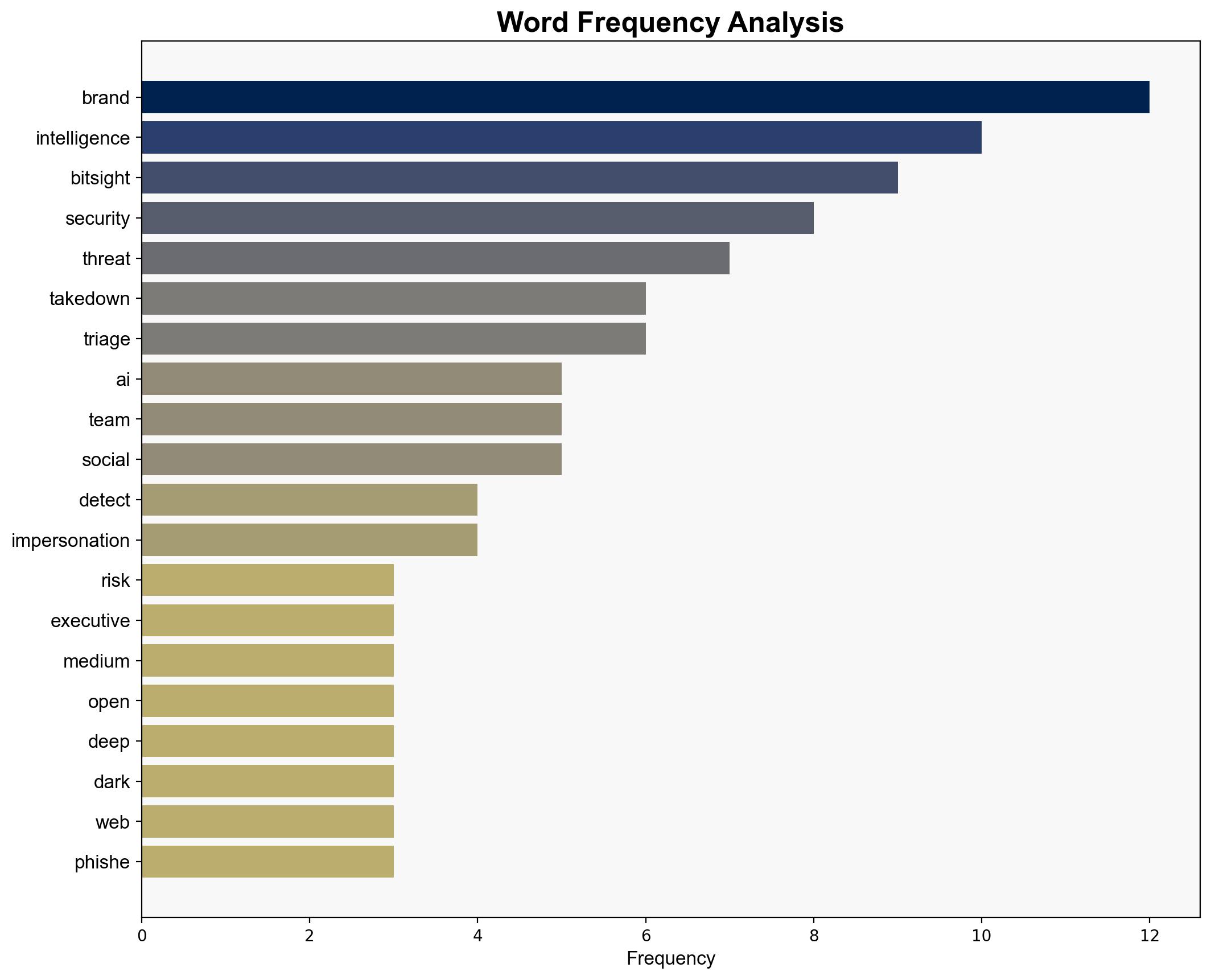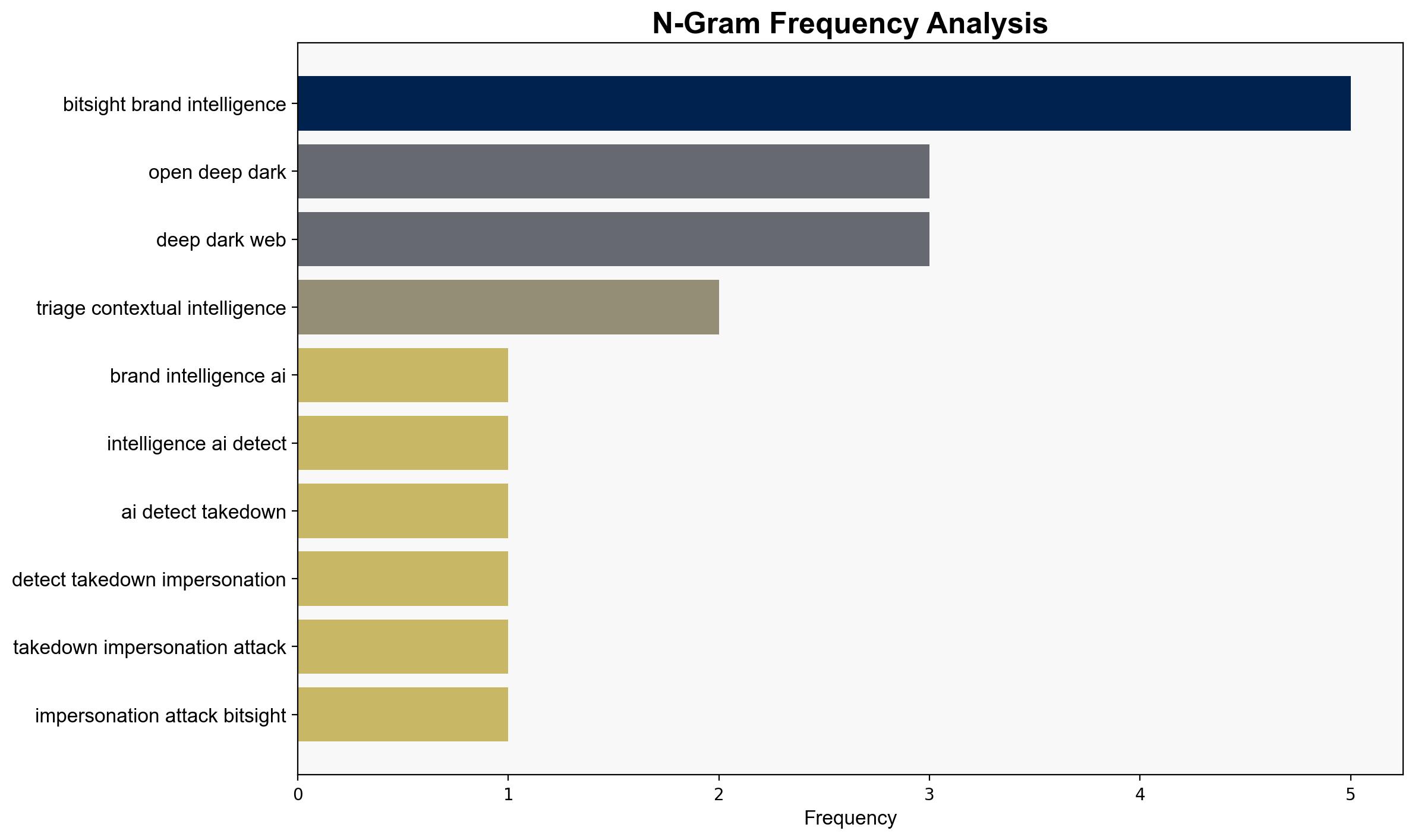Bitsight Brand Intelligence uses AI to detect and takedown impersonation attacks – Help Net Security
Published on: 2025-10-15
Intelligence Report: Bitsight Brand Intelligence uses AI to detect and takedown impersonation attacks – Help Net Security
1. BLUF (Bottom Line Up Front)
Bitsight’s new AI-driven brand intelligence module offers a promising solution to combat impersonation attacks by automating detection and takedown processes. The most supported hypothesis is that Bitsight’s technology will significantly enhance the efficiency of security teams, reducing the impact of impersonation attacks. Confidence level: Moderate. Recommended action: Monitor the deployment and effectiveness of this technology across different sectors to assess its real-world impact and adaptability.
2. Competing Hypotheses
1. **Hypothesis A**: Bitsight’s AI-driven brand intelligence will substantially improve the detection and mitigation of impersonation attacks, leading to reduced financial and reputational damage for organizations.
2. **Hypothesis B**: Despite the introduction of AI-driven tools, cybercriminals will adapt their tactics, and the overall impact on reducing impersonation attacks will be minimal.
Structured Analytic Technique: **Analysis of Competing Hypotheses (ACH) 2.0**
– **Hypothesis A** is supported by the integration of AI for automated detection and takedown, which addresses current inefficiencies in manual triage processes.
– **Hypothesis B** considers the adaptability of cybercriminals and potential limitations in AI’s ability to keep pace with evolving threats.
**Assessment**: Hypothesis A is better supported due to the current technological advancements in AI and its application in cybersecurity. However, the adaptability of cybercriminals remains a significant challenge.
3. Key Assumptions and Red Flags
– **Assumptions**: AI technology will continue to advance and remain effective against evolving threats. Security teams will adopt and integrate these tools efficiently.
– **Red Flags**: Over-reliance on AI without human oversight could lead to missed threats. Lack of transparency in AI decision-making processes could hinder trust and adoption.
– **Blind Spots**: Potential for AI to be circumvented by sophisticated attackers is not fully addressed.
4. Implications and Strategic Risks
– **Economic**: Successful implementation can reduce financial losses from fraud and impersonation.
– **Cyber**: Enhanced detection capabilities may push cybercriminals to develop more sophisticated attack vectors.
– **Geopolitical**: Widespread adoption could influence global cybersecurity standards and practices.
– **Psychological**: Increased reliance on AI could lead to complacency in human oversight, potentially increasing vulnerability to novel threats.
5. Recommendations and Outlook
- Encourage organizations to integrate AI-driven tools with human oversight to ensure comprehensive threat detection.
- Conduct regular assessments of AI effectiveness and adapt strategies to counter evolving cyber threats.
- Scenario Projections:
- **Best Case**: Significant reduction in impersonation attacks, leading to increased trust in digital transactions.
- **Worst Case**: Cybercriminals develop new tactics that bypass AI detection, leading to a surge in successful attacks.
- **Most Likely**: Gradual improvement in detection rates with ongoing adaptation by both security teams and attackers.
6. Key Individuals and Entities
– Gabi Reish
– Bryan Perkola
7. Thematic Tags
national security threats, cybersecurity, counter-terrorism, regional focus





